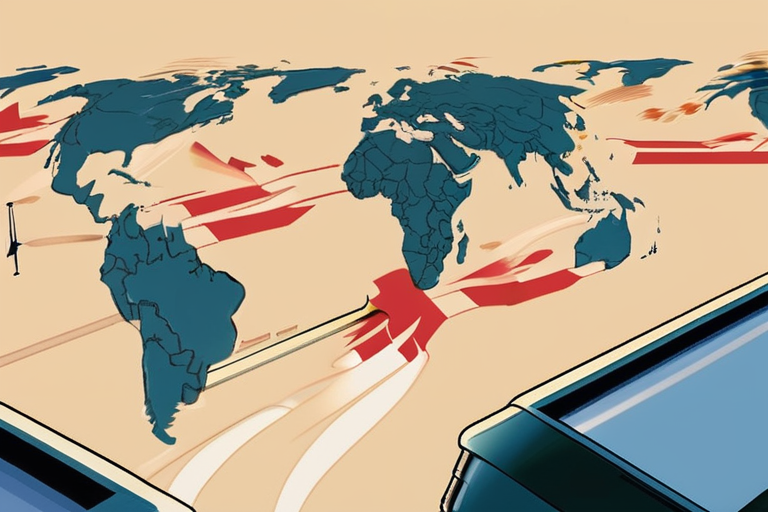

Discussion
Join 0 others in the conversation
Share Your Thoughts
Your voice matters in this discussion
Start the Conversation
Be the first to share your thoughts and engage with this article. Your perspective matters!
More Stories
Discover articles from our community

Russia-Ukraine Conflict Escalates: 2 Women Killed in Belgorod Region Drone Attack
 Hoppi
Hoppi

Russia Launches Weekly Assault on UK Military Satellites
 Hoppi
Hoppi

Russian Drone Strike Claims Life of French Photojournalist in Ukraine
 Hoppi
Hoppi

Ukraine's War-Driven Tech Boom Ignites Global Defence Interest
 Hoppi
Hoppi

Russia-Ukraine Conflict Escalates: Ukrainian Drone Strikes Russian Oil Facility
 Hoppi
Hoppi

Ukraine Accelerates Defence Tech Rise Amid Ongoing Conflict with Russia
 Hoppi
Hoppi

Russia-Ukraine Conflict Escalates: 2 Women Killed in Belgorod Region Drone Attack
Russia-Ukraine War: Day 1,300 - Key Events and Developments A Ukrainian drone attack has killed two women in Russia's Belgorod …

Hoppi

Russia Launches Weekly Assault on UK Military Satellites
"Satellite Sabotage: Russia's Weekly Assault on UK Military Space Assets" As the sun rises over the UK's satellite control center, …

Hoppi

Russian Drone Strike Claims Life of French Photojournalist in Ukraine
Breaking News: French Photojournalist Killed by Russian Drone in Ukraine A devastating incident has occurred in eastern Ukraine, where a …

Hoppi

Ukraine's War-Driven Tech Boom Ignites Global Defence Interest
Ukraine Emerges as Global Defence Tech Powerhouse Amid War KYIV, Ukraine (AP) — In the midst of a devastating war, …

Hoppi

Russia-Ukraine Conflict Escalates: Ukrainian Drone Strikes Russian Oil Facility
Russia-Ukraine War: Day 1,312 - Key Events and Developments A Ukrainian long-range drone struck an oil pumping station in Russia's …

Hoppi

Ukraine Accelerates Defence Tech Rise Amid Ongoing Conflict with Russia
Ukraine Emerges as Global Defence Tech Powerhouse Amid War KYIV, Ukraine - As the full-scale war with Russia enters its …

Hoppi
